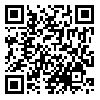BibTeX | RIS | EndNote | Medlars | ProCite | Reference Manager | RefWorks
Send citation to:
URL: http://tbsrj.mazums.ac.ir/article-1-3521-en.html
2- Associate Professor, MSc, PhD, Department of Medical-Surgical Nursing, School of Nursing & Midwifery, Pediatric Infectious Disease Research Center (PIDRC), Mazandaran University of Medical Sciences, Sari, Iran
3- Assistant Professor, MSc, PhD, Health Sciences Research Center, Mazandaran University of Medical Sciences, Sari, Iran
4- Vesal Shirazi St., Nasibeh School of Nursing and Midwifery, Department of Medical-Surgical Nursing, Mazandaran University of Medical Sciences, Sari, Iran
Background & Objectives: Medication errors, as the most common medical
problems in hospitals, are recognized as a indicator for determining patient safety.
Identification of influential factors is a major step towards eliminating and reducing
these errors. In general, medication errors can cause serious problems for nurses.
Therefore, in this study, we aimed to determine the frequency of modified medication
orders in coronary intensive care units and determine the influential factors.
Materials & Methods: This descriptive, cross-sectional study was conducted
on documented drug prescriptions, daily patient records, and interviews with the
medical staff in 2014-2015. The documented medication orders and daily records
of patients, hospitalized in coronary intensive care units in Mazandaran, Iran, were
evaluated. Prescriptions registered in 1046 patient records were evaluated through
census sampling over a three-month period. The data were collected using the
demographic form and the modified medical order checklist. Descriptive statistics
were calculated and Chi-square test was performed, using SPSS version 19.
Results: In total, 17,215 medication orders and 1,046 records of patients,
hospitalized in six coronary intensive care units, were evaluated. Overall, 130
modified medical orders, i.e., 0.75% of the total orders, were extracted. Based on the
findings, modified medication orders were significantly associated with the patient’s
age and the prescriber’s educational level and academic year.
Conclusion: Based on the findings, it is suggested that healthcare centres through
implementing training programs, registering patient information, pharmacological
monitoring, and utilizing expert clinicians, guide medication orders in order to
prevent and reduce medication errors and eradicate the adverse effects on the quality
of nursing care and patient safety.
Published: 2016/07/5 | ePublished: 2016/07/5
| Rights and permissions | |
 |
This work is licensed under a Creative Commons Attribution-NonCommercial 4.0 International License. |





